Abstract
Natural populations of the nuisance bloom cyanobacterium Microcystis aeruginosa obtained from the eutrophic Neuse River, N.C., revealed optimal chlorophyll a-normalized photosynthetic rates and resistance to photoinhibition at surface photosynthetically active radiation (PAR) intensities. At saturating PAR levels these populations exhibited higher photosynthetic rates in quartz than in Pyrex vessels. Eucaryotic algal populations obtained from the same river failed to counteract photoinhibition. At saturating PAR levels, such populations generally yielded lower photosynthetic rates in quartz containers than they did in Pyrex containers. Cultivation of natural Microcystis populations under laboratory conditions led to physiologically distinct populations which had photoinhibitory characteristics similar to those of other cultured cyanobacterial and eucaryotic algae. Our findings indicate that (i) photosynthetic production among natural surface populations is best characterized and quantified in quartz rather than Pyrex incubation vessels; (ii) extrapolation of natural photoinhibitory trends from laboratory populations is highly subjective to culture and PAR histories and may yield contradictory results; and (iii) buoyant surface-dwelling populations, rather than exhibiting senescence, are poised at optimizing PAR utilization, thereby maintaining numerical dominance in eutrophic waters when physico-chemical conditions favor bloom formation.
Full text
PDF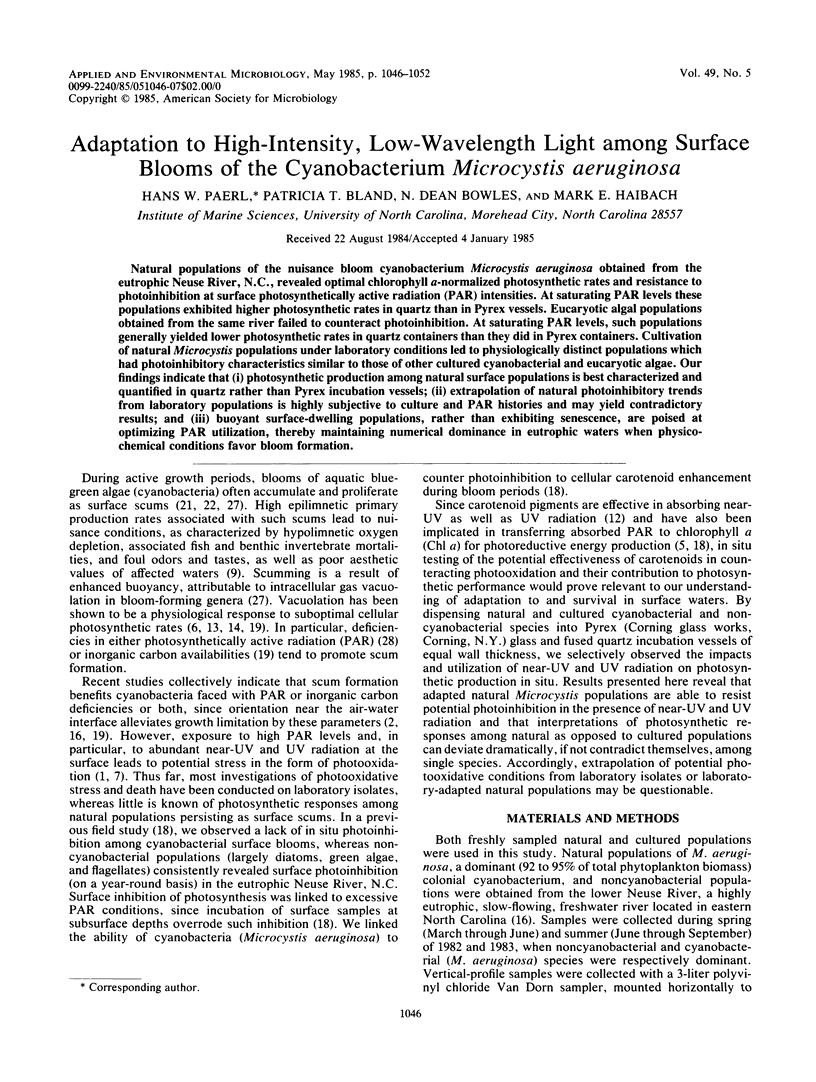
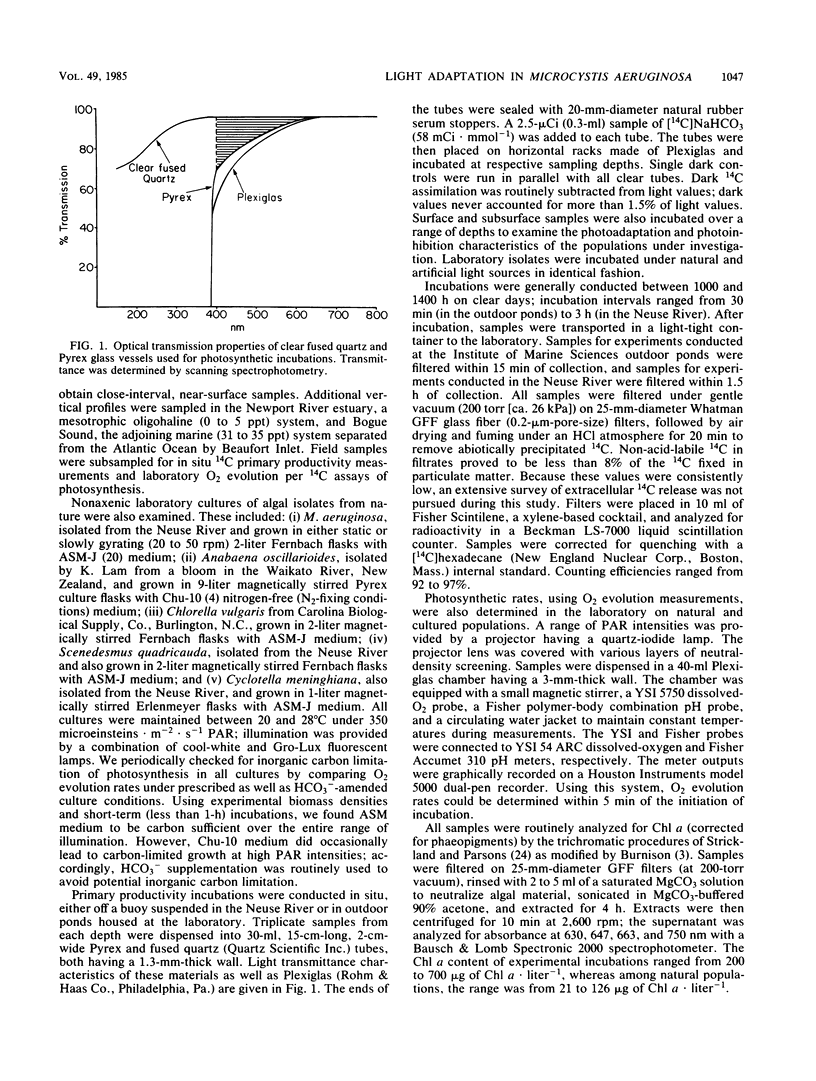
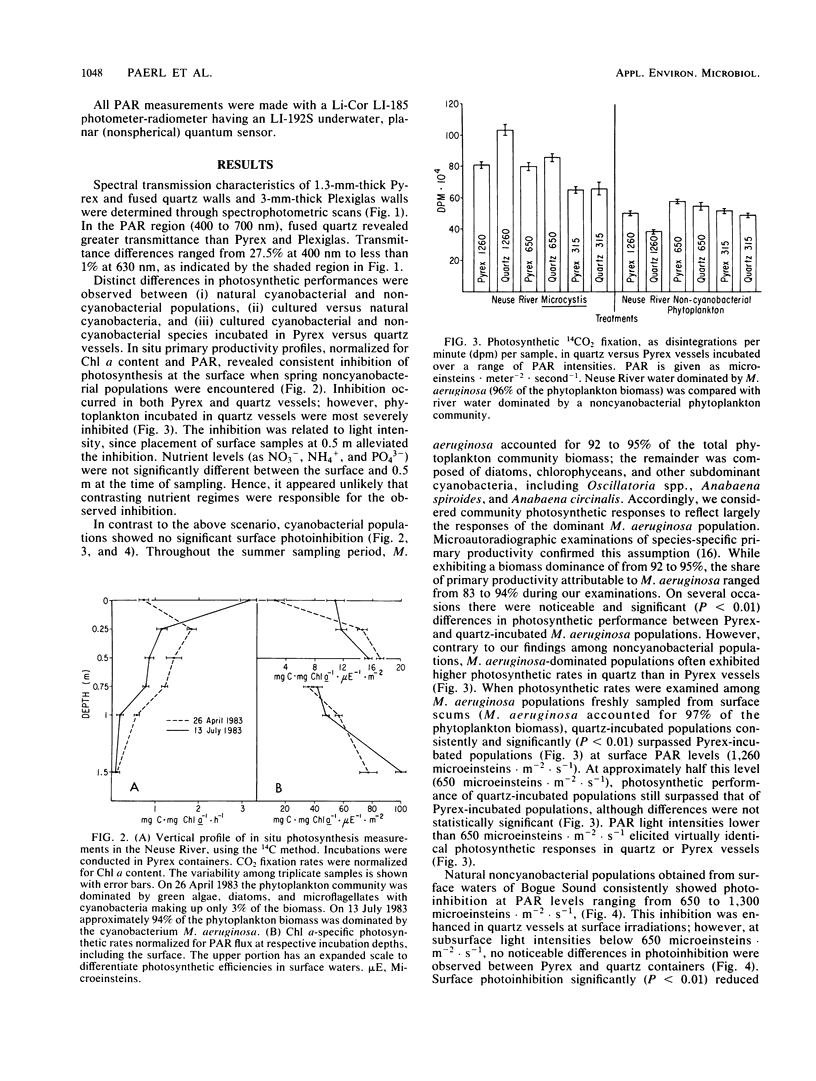
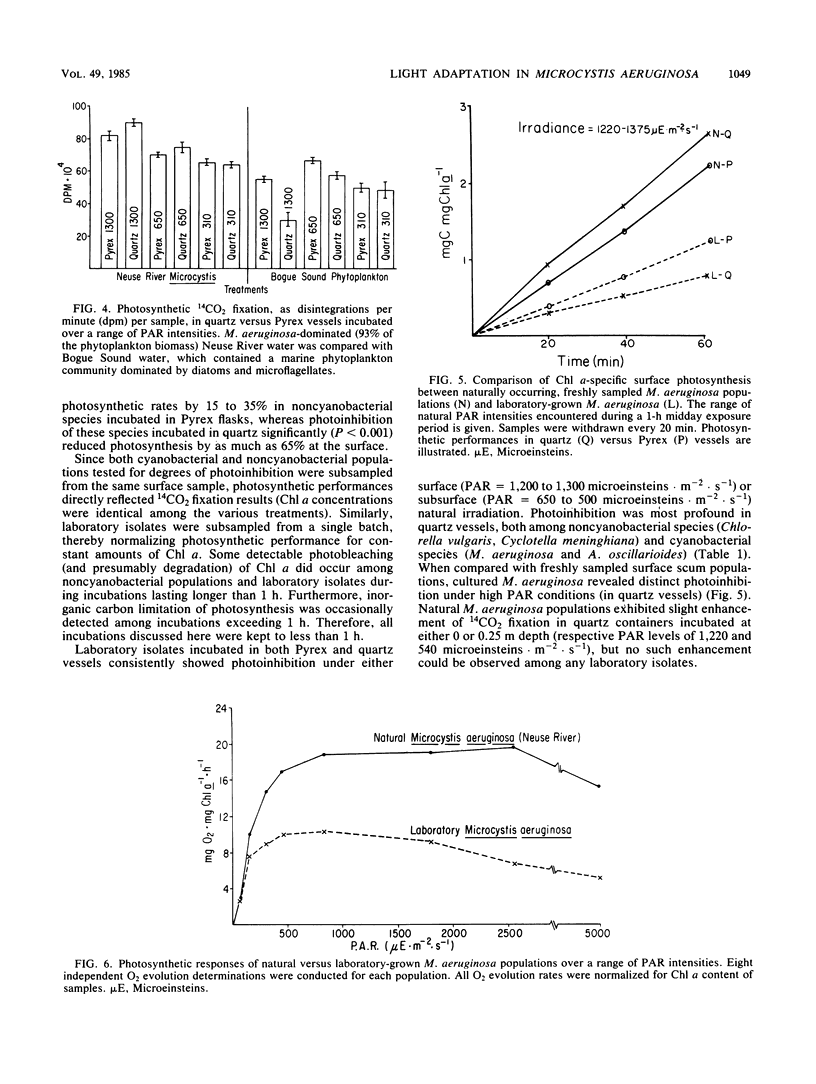

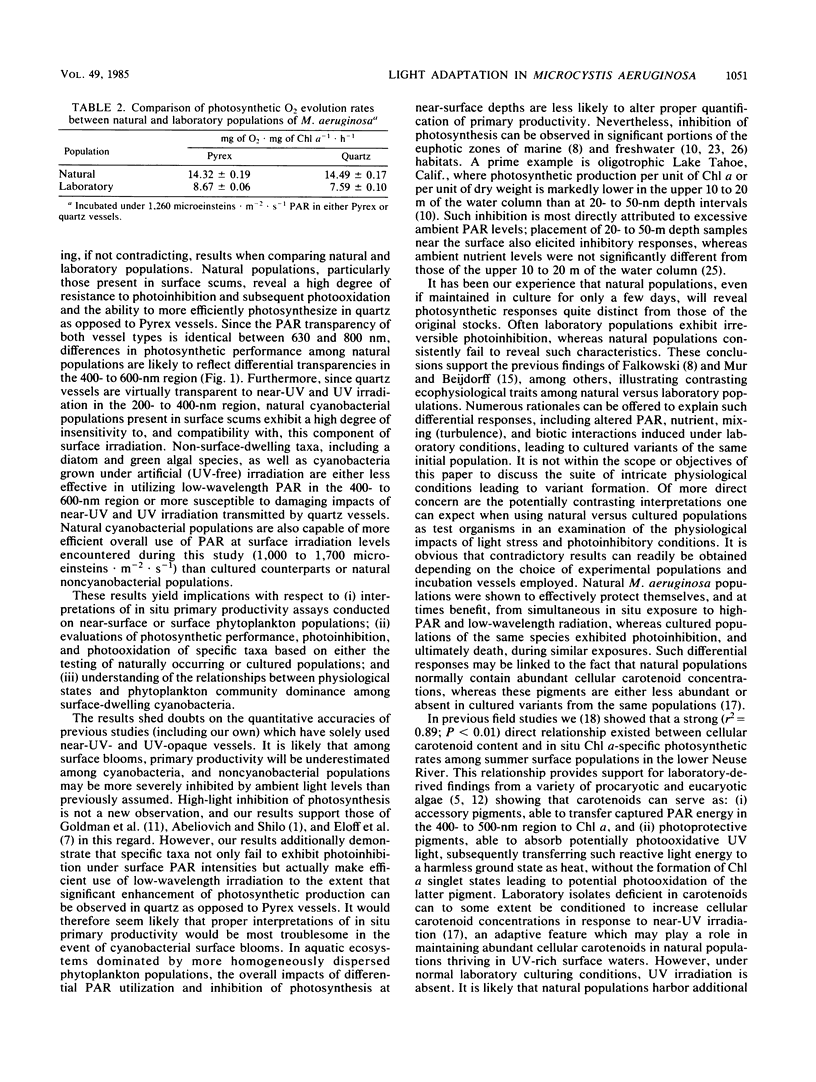
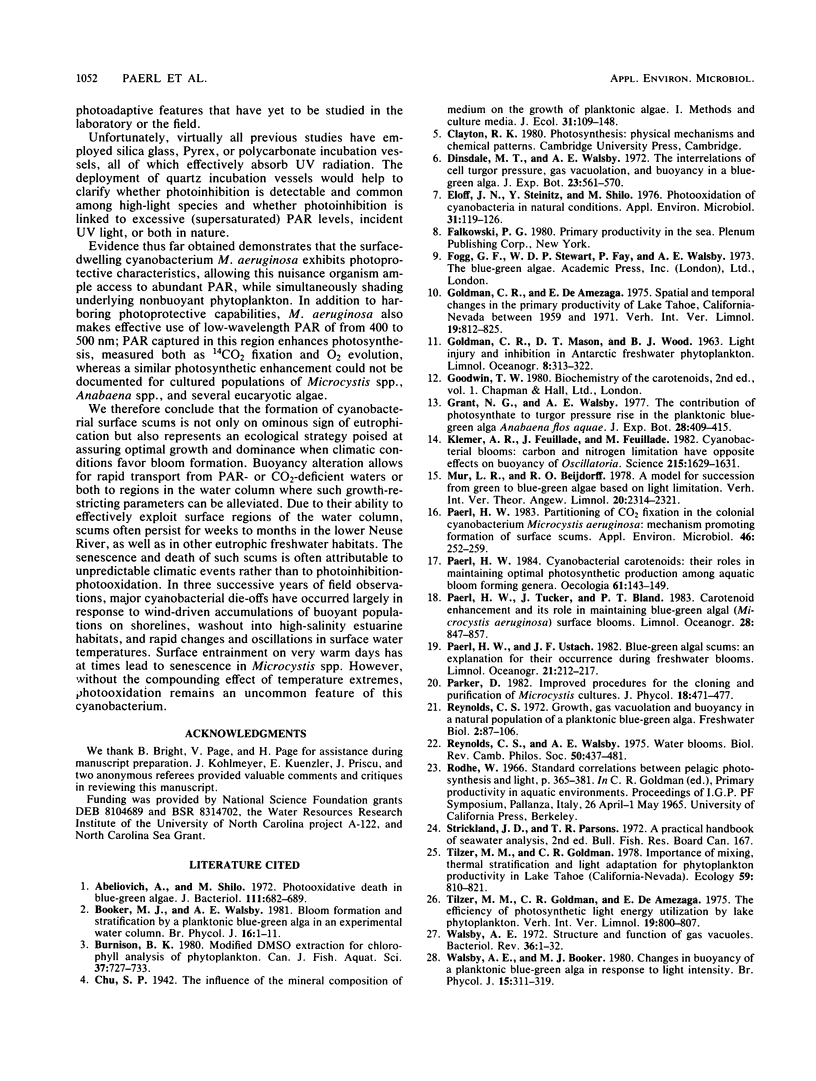
Selected References
These references are in PubMed. This may not be the complete list of references from this article.
- Abeliovich A., Shilo M. Photooxidative death in blue-green algae. J Bacteriol. 1972 Sep;111(3):682–689. doi: 10.1128/jb.111.3.682-689.1972. [DOI] [PMC free article] [PubMed] [Google Scholar]
- Eloff J. N., Steinitz Y., Shilo M. Photooxidation of cyanobacteria in natural conditions. Appl Environ Microbiol. 1976 Jan;31(1):119–126. doi: 10.1128/aem.31.1.119-126.1976. [DOI] [PMC free article] [PubMed] [Google Scholar]
- Klemer A. R., Feuillade J., Feuillade M. Cyanobacterial blooms: carbon and nitrogen limitation have opposite effects on the buoyancy of oscillatoria. Science. 1982 Mar 26;215(4540):1629–1631. doi: 10.1126/science.215.4540.1629. [DOI] [PubMed] [Google Scholar]
- Paerl H. W. Partitioning of CO(2) Fixation in the Colonial Cyanobacterium Microcystis aeruginosa: Mechanism Promoting Formation of Surface Scums. Appl Environ Microbiol. 1983 Jul;46(1):252–259. doi: 10.1128/aem.46.1.252-259.1983. [DOI] [PMC free article] [PubMed] [Google Scholar]
- Walsby A. E. Structure and function of gas vacuoles. Bacteriol Rev. 1972 Mar;36(1):1–32. doi: 10.1128/br.36.1.1-32.1972. [DOI] [PMC free article] [PubMed] [Google Scholar]


